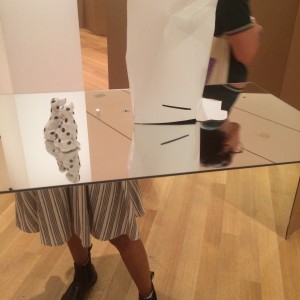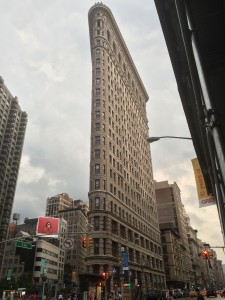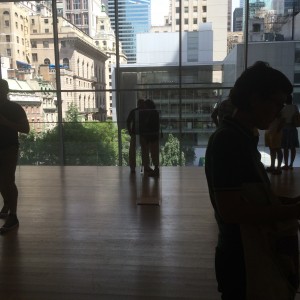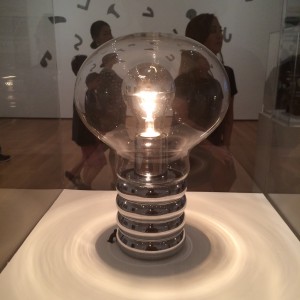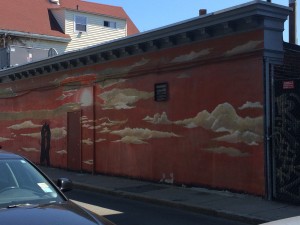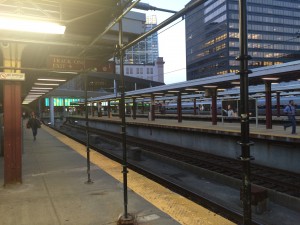It was 3:00am and I was surprisingly awake considering how early it was. My mom shuffled out of her room, half awake, yet still loaded with questions to fill her mental checklist (typical to a worried mother, whose youngest is about to embark on a journey across the country). “3:30,” she said, “that’s when we’ll leave for the airport.” My flight was at 5:50am…Fine, I thought, better early than rushing to my gate (more to appease my worrisome mother than anything). My father, on the other hand, was savoring his last few minutes in bed and protested overruled that we leave so early. “We don’t need to leave sooner than 4,” he commanded. Overall, it was just too much discord for 3 in the morning, so, as usual, we listened to my father.
We embarked on the 30 minute drive to the airport and my mother insisted on waiting with me to check in my baggage, which resulted in us waiting in the wrong line for 15 minutes (after I urged her that we were in the wrong line more than once). So with that 15 minutes plus the additional 20 minutes of waiting in the right line, I was feeling a little stressed for time entering the TSA security line. To my relief, everything worked out, with me arriving at my terminal 1 minute before boarding. After nearly 8 hours, I landed in the tiny Tweed Airport in New Haven around 2:30 pm with 5% of battery left on my phone, which added a little excitement to my journey. I was happy to finally be able to grab an uber (before my phone died) and head to the apartment I would call home for the next 7 weeks, when I realized that I did not have my debit card. The card that contained all of my money was missing at the worst time possible. After about 15 minutes of searching, panicking, and then finally composing myself, I managed to call my mom (without my phone dying) and arrange for an uber.
Once on the streets, I noticed it was a damp and chilly day in New Haven (not the greatest first impression), but I reached the charming atmosphere of Chapel St. and entered my apartment. It was adorable with the perfect amount of old New England yet modern East Coast charm. I settled in, and, despite unpacking my things, an empty feeling began to settle in. Being in a unfamiliar place where I didn’t know anyone was lonely, especially after a long day of traveling and unanticipated obstacles. So I ended up doing what takes my mind off things the best–cook. I made a hodgepodge of what was left in the fridge from the previous tenant (to my benefit, she was very into high-quality food products). This random mixture of ingredients came to reflect my emotions the next morning. Anticipation, anxiety, excitement, and determination.
I woke up earlier than I was used to and made the 15 minute trek to the Mason Laboratory on the Yale campus. To my delight, the weather juxtaposed the dreariness of the previous day, giving me a wave of optimism as I soaked in the brisk air and sunlight. I finally reached the office of Humberto Jaramillo, room 306, with the direction of a kind, older woman who sensed my unfamiliarity with the building. After a quick, “hello” and “nice to meet you”, Humberto quickly made me feel at ease and comfortable. He took his time going through his research topic as well as taking breaks to talk about his personal life and influences for entering grad school and asking questions about my life and interests. The anxiety I had built up over the past few days had finally subdued and I was finding myself more and more intrigued by his research. I began to draw away from my own personal issues (like a lost debit card) and contemplate how living without clean water would affect my life.
Today, water quality and accessibility have come to define many major global issues. According to a review on reverse osmosis by Menachem Elimelech, presently, over one-third of the world’s population lives in water-stressed countries and by 2025, this figure is predicted to rise to nearly two-thirds. Currently, our only option is to improve the use of existing water resources and that means utilizing more efficient desalination and water reuse technologies. So, as a part of NEWT’s Thrust III team, Humberto has tasked himself with the job of reducing the deposition of gypsum on the surface of reverse osmosis membranes by modifications through polymer growth on the membrane surface itself. With me as his trusty sidekick, we will be producing self-assembled monolayers of gold-coated, silicon wafers on which three different polymers will grow–an acid (COOH), an amino (NH3), and an alcohol (OH). The contact angle of three different liquids will then be measured on the three uniquely modified surfaces and a control membrane for brackish water. These angles will then be used in very complex and graduate-level equations to solve for the surface energy of each surface.
The premise behind finding the surface energies is that the energies correlate to how likely gypsum is to crystallize on the membrane surface and cause fouling, which ultimately decreases the flux of the treatment system by reducing the flow and therefore separation of salt from water. Currently, commercial brackish water membranes have a certain surface energy that we expect to be higher than the membranes we modify. With a higher surface energy, gypsum is more likely to attach and grow into what we call rosette structures, which are reflective of surface crystallization. By lowering the surface energy, gypsum is less likely to attach to the surface and instead remain in the feed source without causing scaling. Ultimately, by reducing fouling, reverse osmosis membranes will have longer periods between cleanings (lower maintenance costs), require less energy for higher fluxes (lower capital and operational costs), and have overall longer lifespans.
I hope I covered enough background to build a basis for understanding membrane modifications. Despite how complex it can be, there is more to my research than contact angles and equations. I am slowly realizing that my time can be better spent on work that can actually impact more than just myself. I hope to touch on our other research endeavors in future posts, so stay tuned for more to come!
